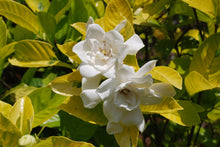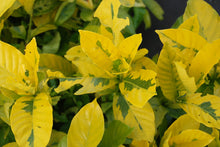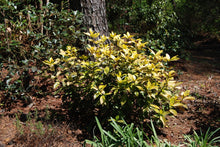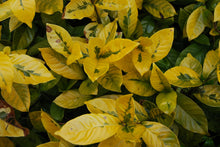Gardenia jasminoides 'Ogon no Hana' GOLD DOUBLOON™
Regular price
$28.00
Sale
Gold Doubloon™ Gardenia. When I first saw this Gardenia in Japan in late 2010, I was in awe of its striking gold foliage. Without a doubt, this is the most incredible variegated Gardenia of all time, as one can clearly see from the photos. On top of this, it has double fragrant flowers which measure between 4.5-5" across. All of the variegated Gardenias that I have seen up to this point have single flowers, except for Gardenia 'Double Variegated', which seldom flowers. The leaves are also the largest of any Gardenia that I have seen. Overall, this plant is a "traffic stopper!" For best foliage color, plant it where it gets at least a half day of full sun. When it first leafs out in the spring, the foliage is more chartreuse, but as the season progresses, the variegation becomes brilliant golden-yellow as one can see in the photos. Professor Fred Thode at Clemson always admonished his students that we should site Gardenias in the landscape so that they don't get early morning sun. This is because when they are heavily frozen on a cold winter morning, if sun immediately strikes them, it appears that they are thawed so rapidly, that it causes a rupturing of the cells of the leaf. Whether or not this is what actually happens, it is very obvious that there is far more cold damage on gardenias here when they are planted on an eastern exposure. When planted on the north or westerly side of a structure, even though it is colder, there is far less cold damage, because the plant's tissue has already thawed by the time the sun strikes them. Thus, if one is trying to grow Gardenias out of their "range," one should take this into consideration. As with all Gardenias, one needs to keep eyes open for the ubiquitous white flies which consider Gardenias as their filet mignon. All gardenias are susceptible to white flies, which in turn secret a sticky honey dew and then sooty mold which grows on this, soon follows. So to prevent the sooty mold, the best cure that we have found is using "worm castings." Sounds too good to be true. But this material which passes through the earthworm prevents white flies and also fertilizes your plant and it is completely natural. WOW! Just amazing.
Zones 7b-9








